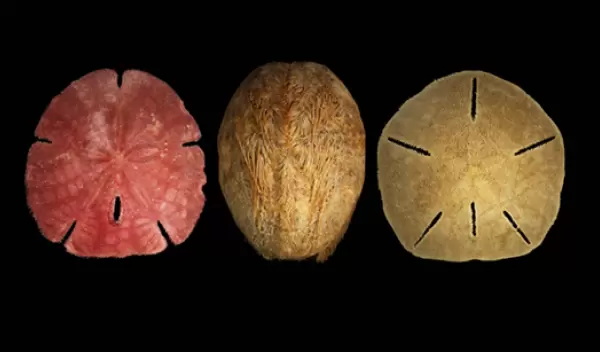
Sea urchins keep on trucking while other marine life languishes in the Florida Keys
In the summer of 2020, Florida Museum researchers Tobias Grun and Michał Kowalewski dove into the shallow waters off the coast of the Florida Keys and scoured the ocean floor for sea urchins. Telltale tracks and dimples in the sediment alerted them to the presence of sand dollars, sea biscuits and heart urchins concealed just beneath the surface.
Between August and April of the following year, Grun and Kowalewski visited 27 sites along a 20-mile stretch of coast near Long Key. By the time they finished, their survey was among the most extensive conducted in the region for the last several decades, and their results offer a bit of good news.
The U.S. National Science Foundation-supported researchers published an analysis of their survey in the journal PeerJ, which shows that the number and diversity of sand dollars, sea biscuits and heart urchins appears to have remained relatively stable since researchers began keeping tabs on their populations in the 1960s.
"It was a pleasant surprise to find that they're still widespread and abundant," said Kowalewski. "The Florida Keys are heavily impacted by human activity, with fishing, tourism and diving all occurring on a massive scale. And coastal ecosystems are subject to climate change, increasingly strong hurricanes and escalating stressors from continuous urban development."
Sea urchins are echinoderms, the name derived from a mix of Greek and Latin meaning "spiny skin." They're closely related to starfish, brittle stars, sea lilies and sea cucumbers. As they tunnel their way through sand, silt and mud in an endless quest for food, they clean, ventilate and enrich the sediment, making it more hospitable to other organisms.
By changing the landscape, they function as ecosystem engineers, said Grun. "They're essential for maintaining healthy environments. They feed on detritus and help oxygenate the sediment, which allows microorganisms to degrade waste."
